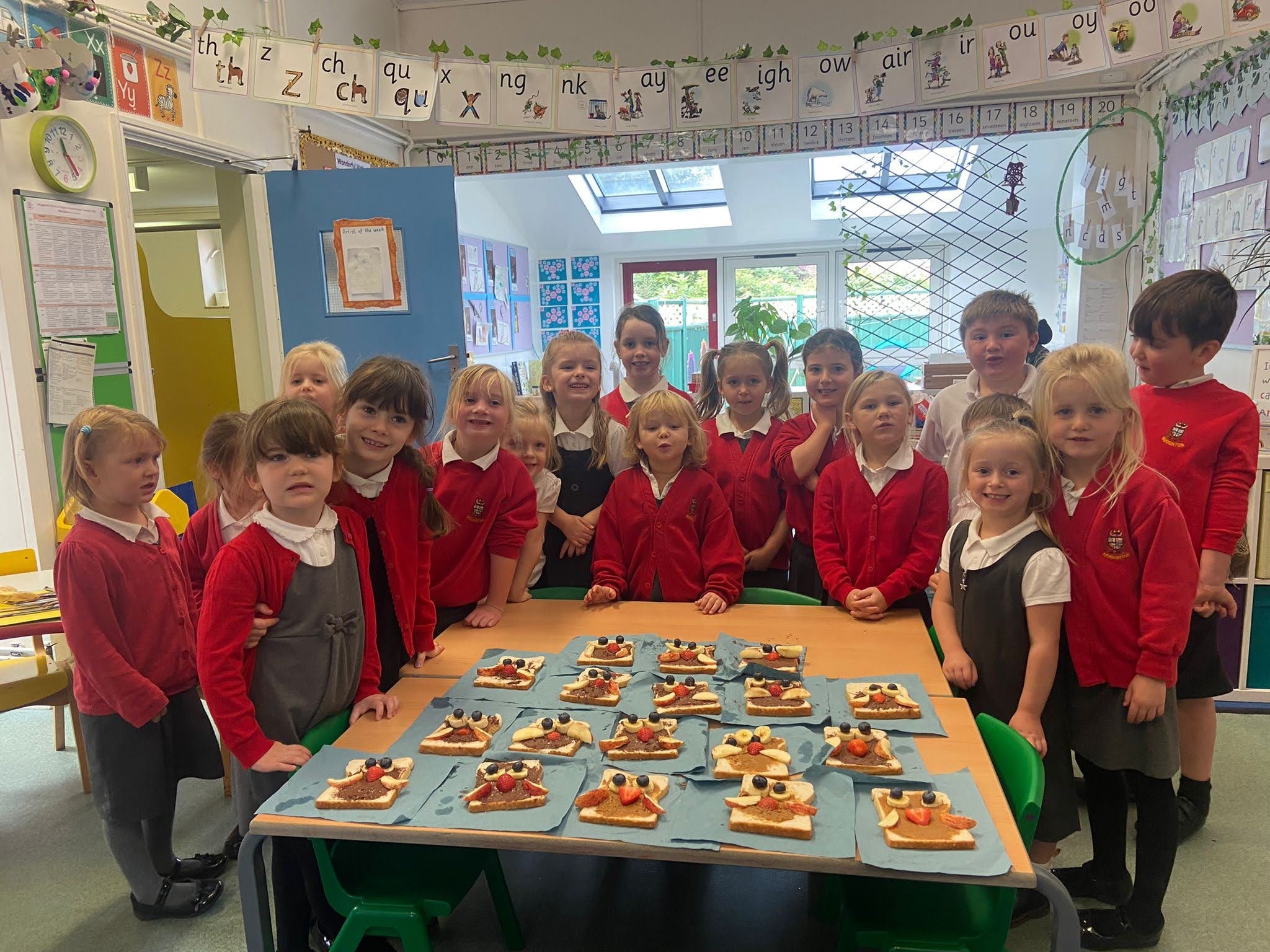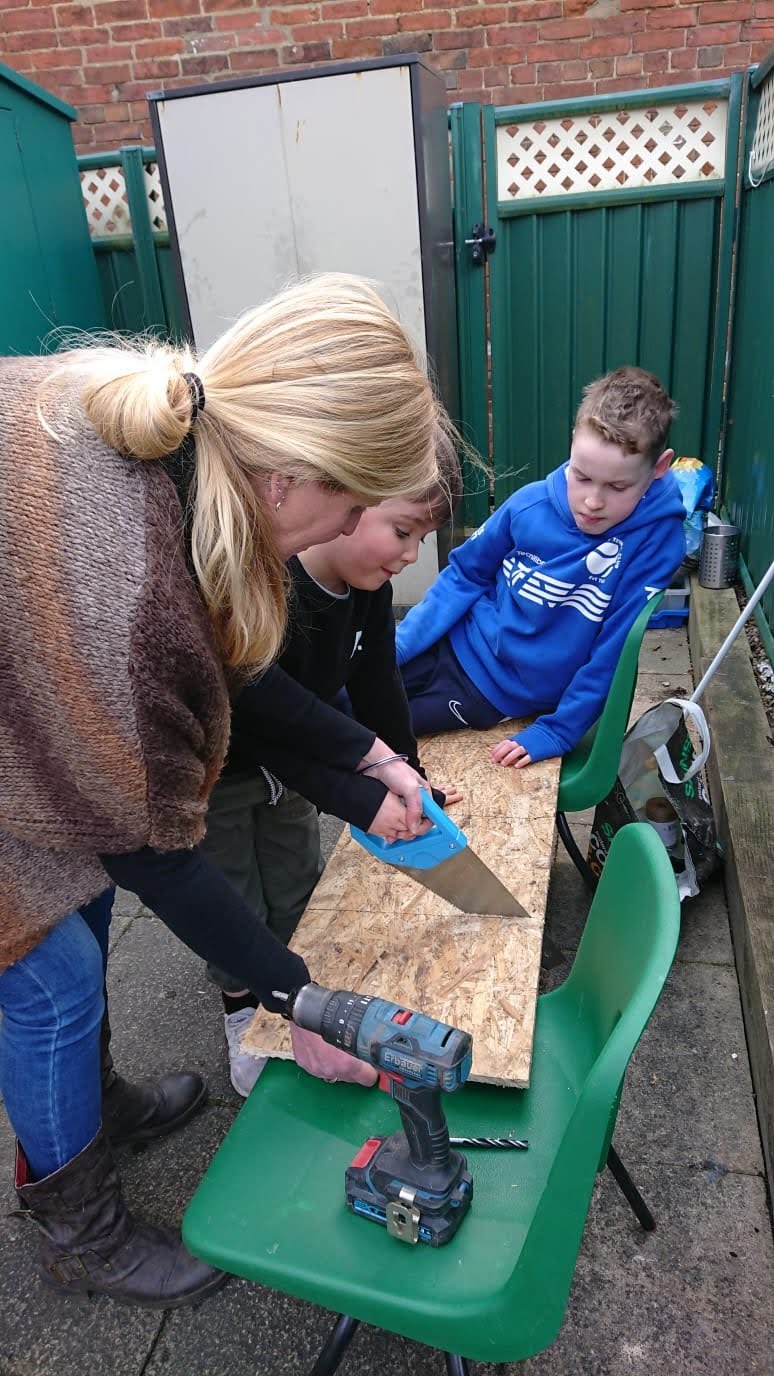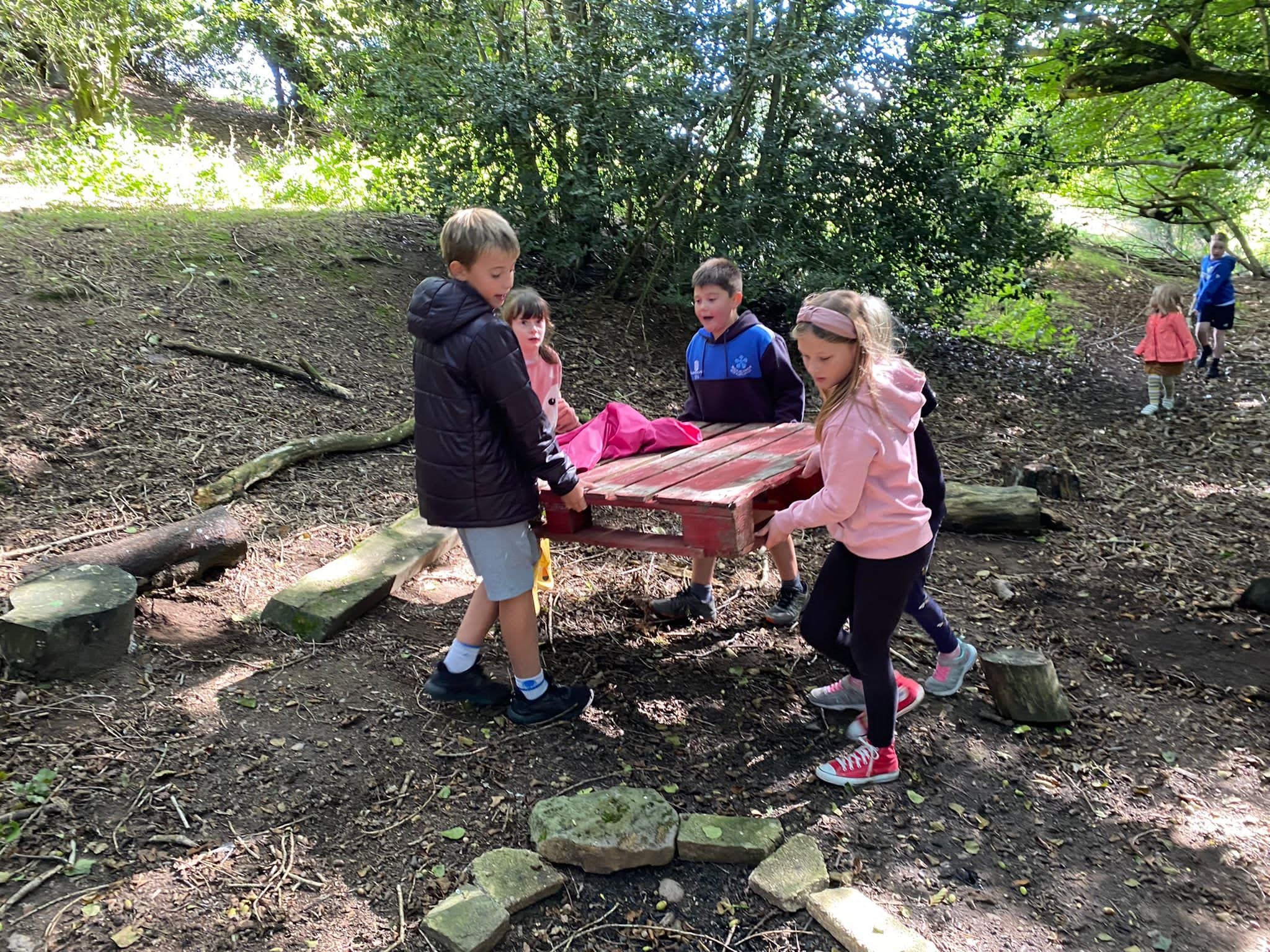
Design and Technology
Design and technology is an inspiring, rigorous and practical subject. Lessons encourage children to learn to think and intervene creatively to solve problems both as individuals and as members of a team. Working independently and collaboratively in class and outside, children use their creativity and imaginations, design and make products that solve real and relevant problems within a variety of contexts, considering their own and others’ needs, wants and values.
At Mugginton Church of England Primary School, Design and Technology is an important part of our children’s entitlement to a broad and balanced curriculum.
At Mugginton Church of England Primary School, Design and Technology is an important part of the children’s entitlement to a broad and balanced curriculum.
Design and technology is an inspiring, rigorous and practical subject. Lessons encourage children to learn to think and intervene creatively to solve problems both as individuals and as members of a team. Working independently and collaboratively in class and outside, children use their creativity and imaginations, design and make products that solve real and relevant problems within a variety of contexts, considering their own and others’ needs, wants and values.
Through a rich and progressive curriculum, they will acquire a broad range of subject knowledge and, wherever possible, draw on disciplines such as mathematics, science, engineering, computing and art. Within a safe and nurturing environment pupils will learn how to take risks, becoming resourceful, innovative, enterprising and responsible citizens.
Through the evaluation of past and present design and technology, they will develop a critical understanding of its impact on daily life and the wider world.
It is our hope that all Mugginton Church of England Primary will use their design and technology skills to make a positive contribution to the creativity, culture, wealth and well-being of our future society.
Our Design and Technology curriculum encompasses the aims of the National Curriculum and also aims to ensure all pupils:
The process of creative thinking and innovation inspires students to bring out undiscovered talents, which in turn breeds a self-confidence and belief in their abilities. It also challenges and appeals to the creative instincts that have driven humanity to discover, adapt and overcome.
Use our beautiful environment and outdoor ethos to supplement and optimise our Design & Technology curriculum through hands on tool-based activities at Forest Friday.
We seek to develop a sense of ‘moral conscience’ in our pupils. We teach pupils to understand the wider impacts on the environment when designing and making new products. We encourage sustainable thinking and consideration of the impact on environmentally sensitive areas of the world.
We teach the concept of self-regulation to ensure that children accept responsibility for their behaviour and the safety of others. We place an emphasis on developing the ability to work with others during the design and making process in the classroom and outside. Self and peer evaluation is used as a vehicle to improve the products being made and pupil’s learning outcomes.
We seek to expand pupil’s knowledge of cultural influences on design. We develop wider cultural awareness in Design Technology through projects that have a connection with our past heritage and how our industrial routes have shaped our nation.
develop the creative, technical and practical expertise need to perform everyday tasks confidently and to participate successfully in an increasingly technological world.
build and apply a repertoire of knowledge, understanding and skills in order to design and make high-quality prototypes and products for a wide range of users
critique, evaluate and test their ideas and products and the work of others
understand and apply the principles of nutrition and learn how to cook.
We want to provide opportunities for the children to think of themselves as designers and producers of purposeful products used in real-life contexts. We encourage the children to think and intervene creatively to solve problems both as individuals and as members of a team. They are given opportunities to reflect upon and evaluate past and present design technology, its uses and effectiveness and they are encouraged to become innovators and risk takers.
At Mugginton, Key Stage 1 and Key Stage 2 utilise the KAPOW teaching scheme and teachers plan and deliver Design and Technology as part of their overarching themes. Our aim is to provide inclusive and aspirational environments and learning experiences where pupils thrive and build the cultural capital they need to make ambitious choices about their own future
Within Design and Technology, pupils will develop a deep understanding of key concepts and second order concepts. These key concepts have been carefully considered and identified as the core knowledge and skills, required to successfully achieve in Design and Technology. The Key concepts are revisited and developed as the pupils move through the school to ensure the knowledge and skills are firmly embedded within long-term memory. These key concepts compliment work carried out across the school in line with our ethos and values as a rural, village school who celebrate our natural world.
The Design and Technology curriculum is structured into six key concepts:
Appraise and Analyse
Technical Knowledge
Practice
Generate Ideas and Design
Develop and make
Evaluate
Second order concepts:
These second order concepts will be explored and developed throughout the D&T curriculum as pupils move through the school. They can be used across all aspects of a subject to organise the substantive knowledge taught.
Responsibility: (working safely, how design can solve problems, choosing the right materials, responsibilities to customers to ensure quality / reliable products, healthy eating, quality ingredients)
Similarity and difference: (making comparisons, noting differences and drawing conclusions)
Cause and consequence: (identifying how things work, how an action can cause change/movement)
Significance: (significant designers and designs, real world examples of effective and successful products)
Written and oral expression: (Using terminology, evaluating, creating accurate designs, labeling and annotating, explaining processes, presenting)
At Mugginton Church of England Primary School, the teaching of Art and design curriculum has been carefully considered to enable our pupils to become confident and competent designers. We follow the Kapow programme. Our highly skilled staff work to create a progressive skills document where objectives for each year group are progressively mapped out to ensure our pupils are given the acquired skills and knowledge the further their education journey into KS3 and life beyond the classroom.
Our scheme of work has been designed as a spiral curriculum with the following key principles in mind: cyclical (pupils return to the same skills again and again during their time in Mugginton, increasing depth (each time a skill is revisited it is covered with greater complexity, prior knowledge (upon returning to a skill, prior knowledge is utilised so pupils can build upon previous foundations).
Formal elements of art focus on discrete skills: line, shape, tone, texture, pattern, colour.
Design & Technology policy

Designated Safeguarding Lead
Mr J Green
Designated Safeguarding Lead: 1st cover
Monday, Tuesday: Mrs D Wallen; Wednesday - Friday: Mrs E Dennis
Designated Link Governor for Safeguarding
Mrs C Stroud
SENCO
Mrs E Dennis







